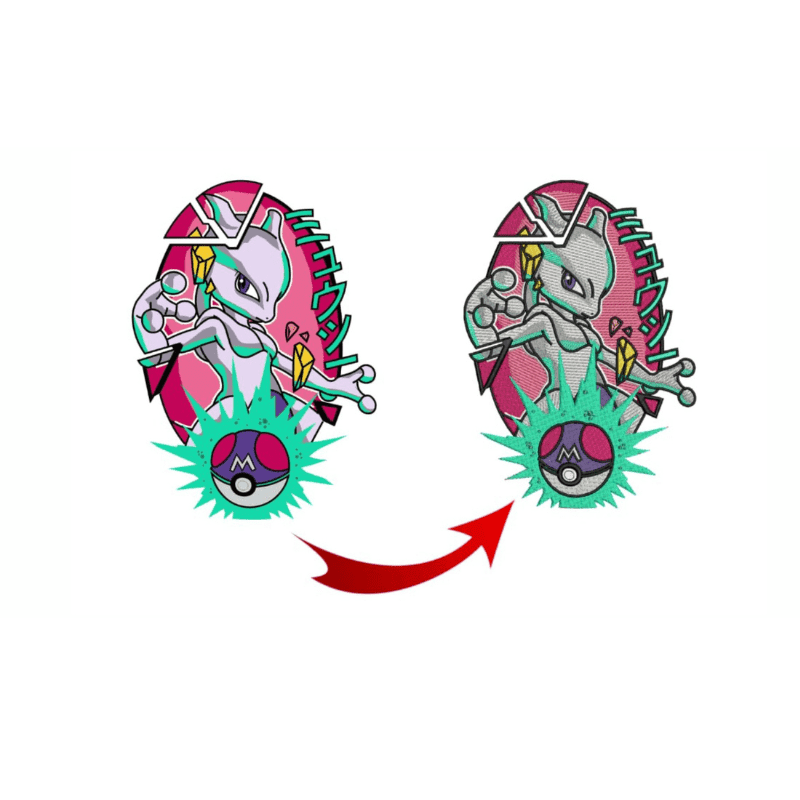High-grade Digitizing for Embroidery: Professional Workmanship
High-grade Digitizing for Embroidery: Professional Workmanship
Blog Article
Simplifying the Art of Embroidery Digitizing: Step-by-Step Guide
As modern technology continues to advance, the digitization process has actually become a lot more obtainable, permitting lovers to bring their intricate styles to life with convenience. In this overview, we will untangle the complexities of embroidery digitizing, damaging down each step carefully to improve the procedure and empower both novices and seasoned embroiderers alike.
Comprehending Embroidery Digitizing Software
Embroidery digitizing software program acts as an essential device for changing elaborate layouts right into electronic formats compatible with needlework machines, assisting in specific stitching and modification. This specific software allows individuals to import numerous image data layouts, such as JPG or PNG, and convert them into needlework machine-readable formats like DST, EXP, or PES - Digitizing for Embroidery. By making use of attributes like stitch modifying, padding choices, and string color selection, digitizing software program allows customers to regulate every element of the layout process
In addition, advanced embroidery digitizing software program provides tools for producing complicated styles, readjusting stitch thickness, and incorporating elaborate details. Customers can also preview the style before stitching it out, making sure precision and decreasing mistakes. Additionally, many software programs provide automatic features that help streamline the digitizing process, saving effort and time.
Comprehending the abilities of embroidery digitizing software is vital for accomplishing top notch lead to embroidery tasks. By grasping this device, needlework lovers and experts can unleash their creativity and bring detailed designs to life with accuracy and effectiveness.

Picking the Right Style Documents
After acquainting yourself with the capacities of needlework digitizing software program, the following vital action in the process is choosing the appropriate layout apply for your project. Digitizing for Embroidery. When selecting a style data for embroidery digitizing, it's vital to take into consideration the intricacy of the layout, the size of the final item, and the kind of material you will certainly be dealing with
For complex layouts with great details, a high-resolution photo or vector data is recommended to ensure that the needlework maker can precisely replicate the design. In addition, the size of the end product plays a substantial duty in choosing the best design documents. Larger layouts may require greater resolution files to keep quality and sharpness.
Additionally, the sort of material you will certainly be embroidering on influences the selection of design data. Different materials might require changes in the layout file to make sure that the stitches are properly lined up and the style looks like meant. By meticulously selecting the best style documents based upon these factors, you can set on your own up for a successful embroidery digitizing process.
Digitizing Devices and Strategies
Making use of specialized software and precision methods, digitizing devices are essential in transforming complex layouts into embroidery-ready data. Needlework digitizing software, such as Wilcom, Hatch, or Embrilliance, supplies the necessary system to convert art work right into stitch data. These programs provide functions like stitch editing and enhancing, padding options, and lettering tools to make certain the design translates perfectly onto material.
One of the crucial strategies in digitizing is developing a clear course for the needlework machine to follow. This involves digitizing each element of the design with accuracy, determining stitch kinds, thickness, and instructions. By utilizing devices like digitizing tablet computers or software-specific plugins, embroiderers can attain a high degree Going Here of accuracy in their digitized designs.
Additionally, mastering the art of underlay stitching is essential for producing high quality needlework. Underlay stitching stabilizes the textile and develops a foundation for the design, ensuring that the last item is both aesthetically attractive and lasting. By understanding these digitizing devices and strategies, embroiderers can raise their craft and bring you can check here elaborate designs to life with accuracy and performance.
Tailoring Stitch Kinds and Directions
The selection of stitch kinds can significantly affect the overall look and texture of the embroidered layout. By strategically integrating these stitch kinds, embroiderers can achieve deepness and measurement in their designs.
Furthermore, the direction of stitches plays a critical role in improving the aesthetic appeal of the final needlework. Numerous stitch directions can add texture, highlight details elements, and create visual passion. Altering the angle of stitches can imitate movement or natural patterns like fur or feathers. By trying out various stitch angles and patterns, embroiderers can bring their designs to life with exceptional information and intricacy. Mastering the art of personalizing stitch kinds and instructions encourages embroiderers to unleash their creativity and boost the top quality of their work.
Screening and Refining Your Digitized Layout
To ensure the precision and top quality of your digitized design, detailed testing and refinement are vital steps in the embroidery digitizing process. As soon as you have actually finished the digitization of your design, it is important to evaluate it before proceeding with the real needlework. Evaluating allows you to identify any kind of potential concerns such as string breaks, stitch density troubles, or style distortions that may affect the outcome.

After screening, it is necessary to fine-tune your digitized design based upon the responses from the test sew-out. This may entail tweaking stitch settings, readjusting densities, or making adjustments to the general design to attain the preferred outcome. By repeating with testing and improvement, you can tweak your digitized style to perfection dig this prior to moving on with the real embroidery procedure.
Final Thought
Finally, grasping the art of embroidery digitizing needs an extensive understanding of the software, selecting the ideal style data, making use of digitizing devices and techniques, customizing stitch kinds and directions, and screening and refining the digitized style. By following these steps, embroiderers can streamline the digitizing procedure and produce top quality stitched designs with accuracy and efficiency.
Report this page